Motion Control Market Size
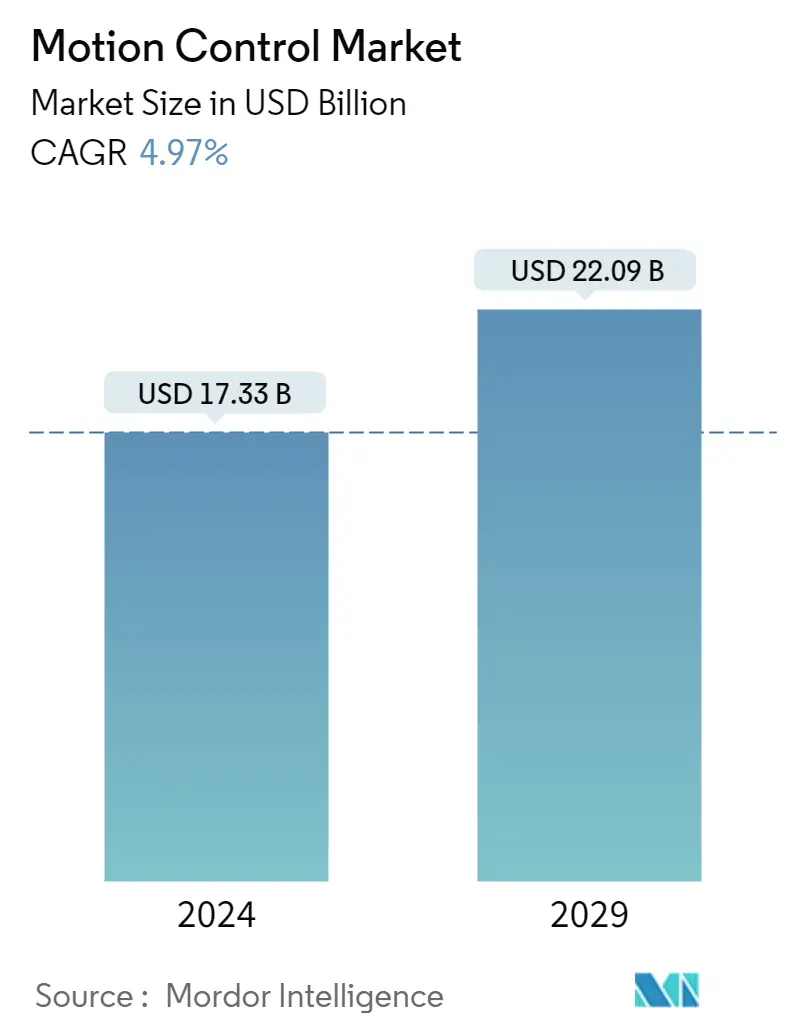
| Study Period | 2019 - 2029 |
| Market Size (2024) | USD 17.33 Billion |
| Market Size (2029) | USD 22.09 Billion |
| CAGR (2024 - 2029) | 4.97 % |
| Fastest Growing Market | Asia-Pacific |
| Largest Market | Asia-Pacific |
| Market Concentration | Low |
Major Players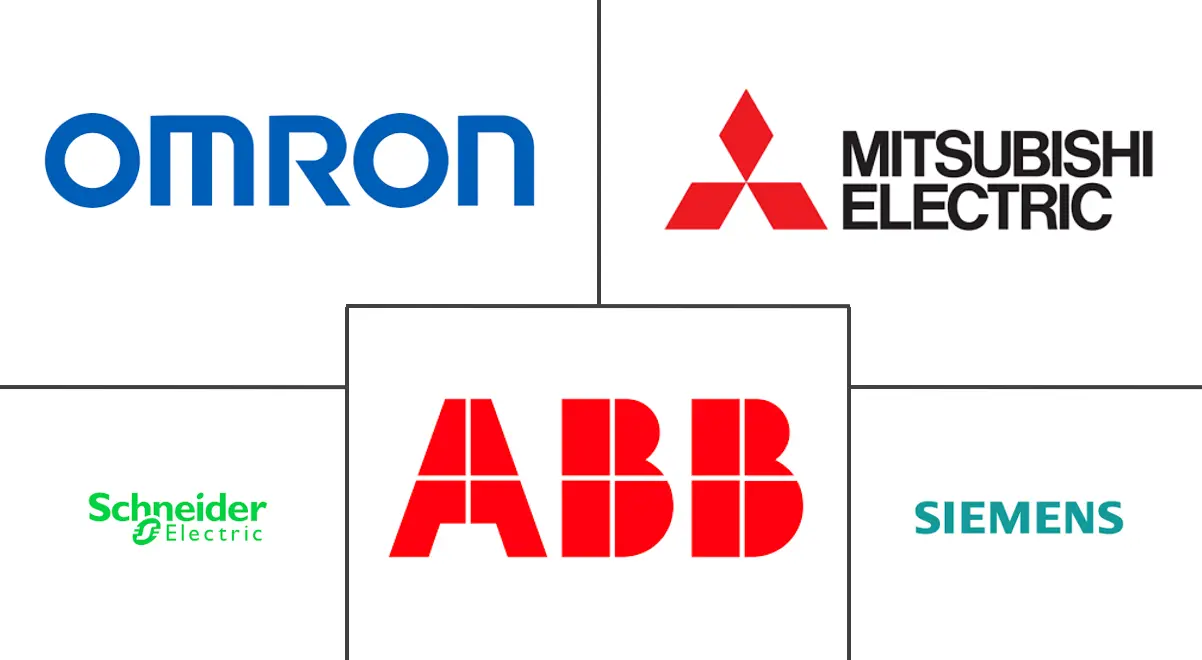
*Disclaimer: Major Players sorted in no particular order |
Motion Control Market Analysis
The Motion Control Market size is estimated at USD 17.33 billion in 2024, and is expected to reach USD 22.09 billion by 2029, growing at a CAGR of 4.97% during the forecast period (2024-2029).
The increasing adoption of Industrial IoT (IIoT) and the growing number of smart factories are further expanding the growth of the market studied. Smart factories are becoming significant adopters of motion control products. The industrial IoT further increased the need and demand for connected machines in industries. These connected machines alone are not enough to accomplish pure digital transformation; organizations are developing a seamless ecosystem of humans and machines, performing optimized, end-to-end processes.
- Governments across the globe have enacted various policies supporting automation to improve energy efficiency while significantly reducing the costs incurred. For instance, the Malaysian government launched a National Policy on Industry 4.0 (Industry4WRD). A budget of over USD 1.2 billion was allocated to help businesses adopt Industry 4.0. Within the allocated budget, a total of USD 720 million was allocated to boost the adoption of smart technologies such as robotics, automation and artificial intelligence (AI) under the name Industry Digitalization Transformation Fund. About USD 480 million was allocated under the Business Loan Guarantee Scheme (SJPP) for SMEs planning to invest in automation and modernization.
- Additionally, the increasing trend of warehouse automation and growth in trends, such as digital twins, edge computing, and predictive manufacturing, is also developing space for advanced motion control devices. Robots have become a significant automation trend across the world. In advanced automotive manufacturing, robots have become an essential component. Companies like Amazon are also heavily increasing, and robots, like collaborative robots and AGVs, are becoming the center of attraction in the manufacturing industry.
- Also, in January 2021, The Information Technology Industry Development Agency (ITIDA), through the 'Egypt Makes Electronics' EME Initiative, launched the Industry 4.0 Implementation program in cooperation with Industry 4.0 service provider Fraunhofer IPK Germany aiming at transforming traditional mechanisms and standard practices of manufacturing electronics and home appliances to industry 4.0 techniques and methods, to bring about a qualitative transformation in the industry and to keep up with the international competition. These initiatives are also boosting g the studied market.
- In May 2021, Performance Motion Devices, Inc. (PMD), a provider of motion control ICs, modules, and boards, announced the availability of ION/CME N-Series Digital Drives, new members of the ION Digital Drive family that provide high-performance motion control, network connectivity and amplification. N-Series ION digital drives feature a patented, ultra-rugged PCB-mountable package with three power output levels - 75, 300, and 1,000 watts. All ION/CME N-Series Digital Drives support Brushless DC, DC Brush, and step motors.
- Further, the outbreak of the COVID-19 pandemic has necessitated the implementation of automation, digitalization, and AI, in the manufacturing sector as these are proven to improve resilience to future pandemics. Due to the disruptions in the supply chain and the suspension of manufacturing activities attributed to social distancing norms, several industry players are looking for different solutions to avoid such situations in the future. Adopting automation and robotics in such a situation can reduce dependence on human labor, increase productivity, and reduce the chances of plant shutdowns. Adopting automation and other technologies, such as digitization and AI, will help industries continue their production without the need for human supervision.
- Moreover, the COVID-19 pandemic has created economic turmoil for small, medium, and large-scale industries worldwide. Additionally, the previous country-wide lockdown has drilled many manufacturing industries. This has fluctuated the demand for motion control devices across some sectors.
Motion Control Market Trends
This section covers the major market trends shaping the Motion Control Market according to our research experts:
Oil & Gas Segment to Witness Considerable Growth
- In the current market scenario, oil & gas industries face multiple issues related to business performance, the total cost of operation (TCO), energy efficiency, and safety in upstream and downstream processes. In addition to producing oil & gas, the industry also uses oil & gas in its operations, and efficiency can significantly reduce the industry's impact.
- As traditional hydrocarbon energy resources are depleted, energy production from ever more sensitive and challenging environments is becoming increasingly complex. Motion control and motor systems are observing an unprecedented adoption rate by the oil & gas industry as it focuses efforts on energy efficiency. The industry strives to ensure the availability of oil & gas while addressing energy security and environmental concerns cost-effectively.
- Many compressor stations use motion control devices like servo motors to turn the centrifugal compressor. This type of compression does not require using any natural gas from the pipe. For turbine-driven compressors, a dedicated speed governor handles the fuel valves and other controls on the turbine to maintain efficiency. This function is enabled with IIOT systems driven by sensors for servo motors.
- Moreover, many oil & gas firms are increasingly investing in predictive maintenance to realize significantly less CAPEX, which is further anticipated to propel the demand for motors and drives. For instance, during the time of the pandemic, the state-owned oil company of Abu Dhabi, ADNOC, collaborated with AVEVA on reducing downtime through predictive maintenance with the company's predictive asset analytics solution. ADNOC's control and monitoring systems already encompass some 10 million tags in total. The company expects the number to increase because of the new motor and drive-based control system deployment. The company estimates USD 60 to USD100 million in CAPEX savings through optimization.
- Further, at the end of the second pandemic wave, Indian Oil Corp (IOC), India's leading fuel retailer, announced the launch of the country's first remote monitoring and motion control system for oil refinery turbines. Professionals jointly developed automated Anomaly Detection based on Proactive Predictive Analytics from General Electric, BHEL, and IndianOil. This technology will allow the Remote Monitoring and Motion Controlling Center in Hyderabad to continuously analyze the Gas Turbine Operational Data coming in digitally from the 27 gas turbines of the eight IndianOil refineries throughout the nation.
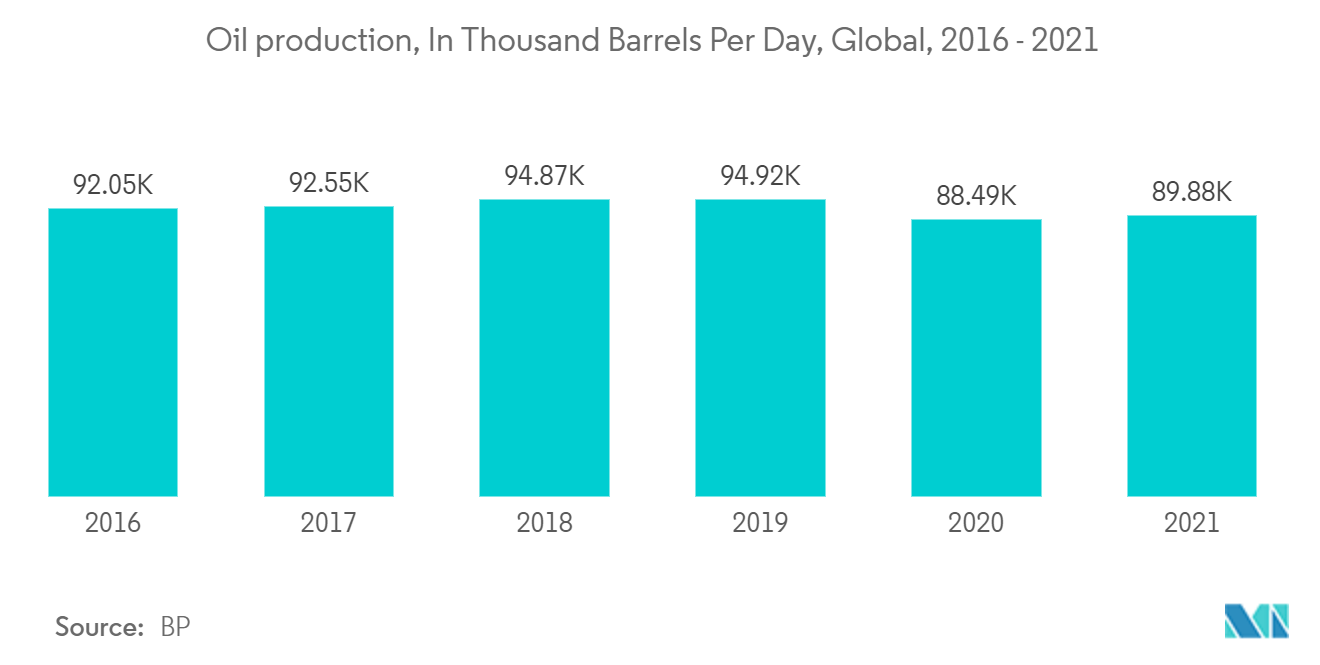
Asia-Pacific is Expected to be the Fastest Growing Market
- Asia-Pacific is one of the most important markets for the market studied. The region offers massive growth potential to the studied market vendors, owing to the growing adoption of automation across the various end-user industries in the region. The energy concern in the region is also increasing the adoption of low voltage electrical equipment and motivating many companies to develop energy-efficient and compact electrical equipment and devices, further driving the motion control growth.
- The region is also a manufacturing hub for many global markets, and automation has become essential in these facilities. Manufacturing is a significant contributor to China's economy and is undergoing a rapid transformation. The industrial control system in the country has emerged across various fields, like the energy, transportation, water, and municipal sectors. Due to the deep integration and rapid development of the IoT, the networked control system is becoming the development trend of industrial automation in China, further developing space for motion control centers.
- In June 2022, the Chinese government announced that the country would be a key source of global robotics innovation by 2025. Further, per the Ministry of Industry and Information Technology, China will become the most robot-intensive country in the world within the next three years, which is expected to accelerate the demand for servo motors-based motion control systems for robotics in the region considerably.
- India is planning to achieve 175 GW of installed renewable capacity, which includes solar and wind power, by 2022. Currently, India has a total wind installed capacity of 39.25 GW (as of 31st March 2021), which is the fourth highest in the world, per the Ministry of New and Renewable Energy. The country plans to derive 40% of its energy from renewable sources by 2030. To achieve these energy manufacturing goals, manufacturers, along with the government's help, are making significant investments in industrial automation solutions.
- Further, a report published in March 2022 by NASSCOM, in collaboration with Capgemini, highlights the increased investment in technologies like cloud and IoT by the Indian manufacturing sector, with USD 5.5 - USD 6.5 billion spent on Industry 4.0 in FY21. These initiatives by the government will bolster the studied market in the region.
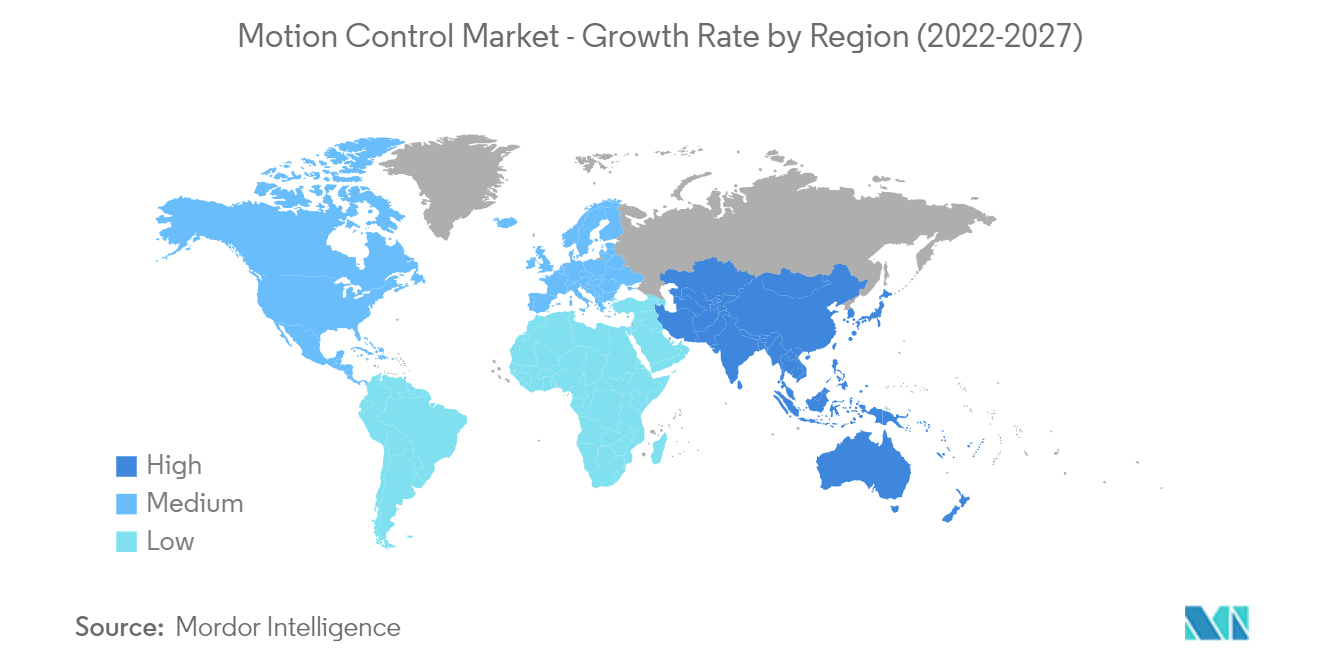
Motion Control Industry Overview
The motion control market is highly competitive and consists of several major players. These major players with a prominent share in the market are expanding their customer base across foreign countries. These companies are leveraging on strategic collaborative initiatives to increase their market share and increase their profitability. Some of the recent developments in the market are:
- December 2021 - ACS Motion Control has released two new products in the SPiiPlus series of EtherCAT-based motion controllers and motor drives. The CMxa and UDMxa are intended for micron to nanometer resolution applications and demand velocity control requirements standard in laser micromachining, metrology, inspection, alignment, and other high-precision industrial applications.
- November 2021 - STXI Motion, a global motion control and servo solution company, presented a range of low-voltage motion solutions for decentralized architecture at SPS 2021.
Motion Control Market Leaders
-
Siemens AG
-
Schneider Electric SE
-
Mitsubishi Electric Corporation
-
ABB Ltd.
-
Omron Corporation
*Disclaimer: Major Players sorted in no particular order
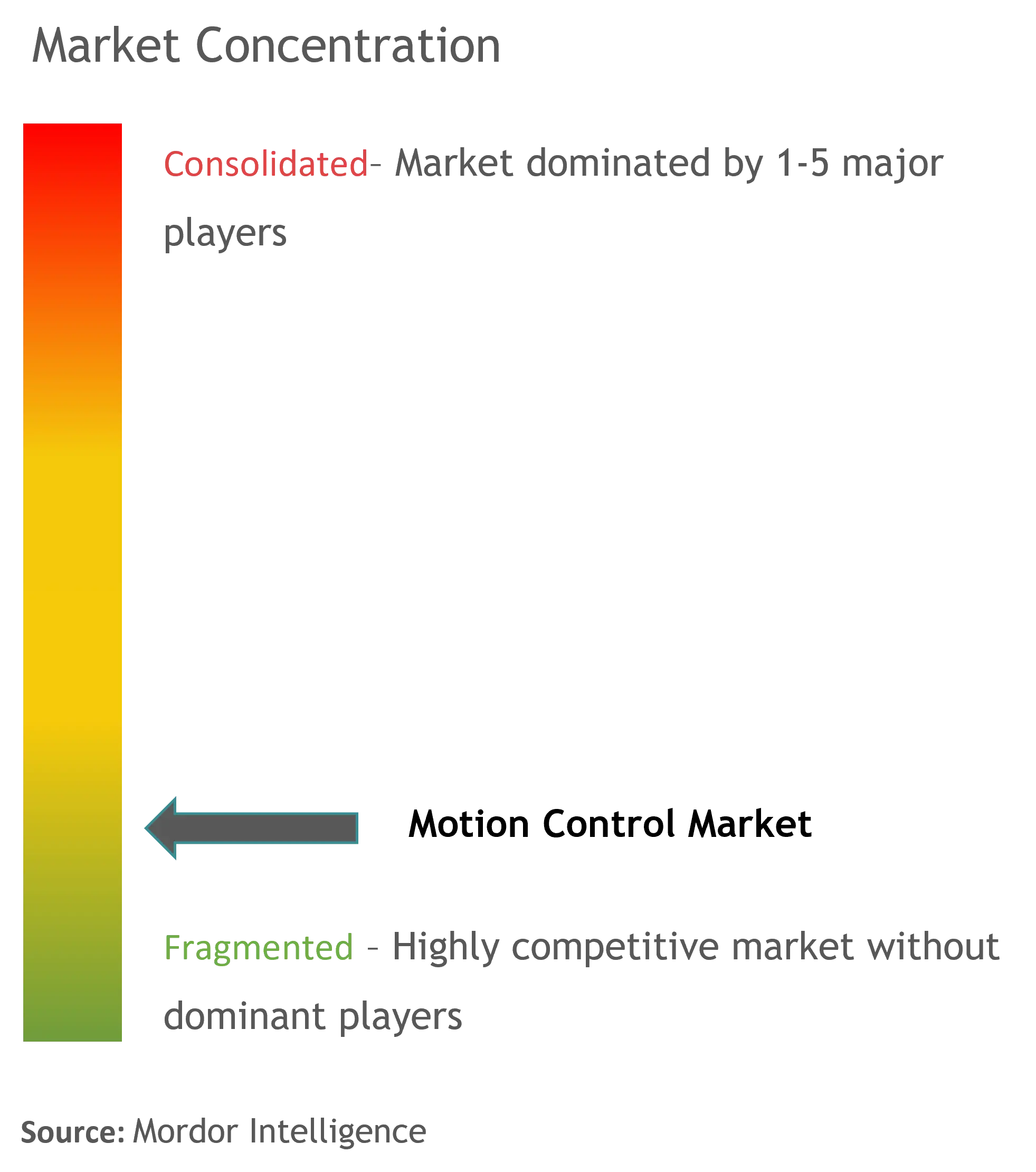
Motion Control Market News
- January 2022 - Moen launched Smart Faucet with best-in-class motion control technology for completely touchless operation. The next generation Smart Faucet with motion control features new touchless technology that allows the user to control temperature and water flow using simple hand motions.
- June 2021 - Yaskawa Electric Corporation announced the industry's first YRM-X (ten) controller, which synchronizes various data of cells composing devices or/and industrial robots, etc., at high speed, in real-time, and in chronological order for integrated motion control.
Motion Control Market Report - Table of Contents
1. INTRODUCTION
1.1 Study Assumptions and Market Definition
1.2 Scope of the Study
2. RESEARCH METHODOLOGY
3. EXECUTIVE SUMMARY
4. MARKET INSIGHTS
4.1 Market Overview
4.2 Industry Attractiveness - Porter's Five Forces Analysis
4.2.1 Bargaining Power of Suppliers
4.2.2 Bargaining Power of Consumers
4.2.3 Threat of New Entrants
4.2.4 Intensity of Competitive Rivalry
4.2.5 Threat of Substitutes
4.3 Industry Value Chain Analysis
4.4 Technological Advancements
4.5 An Assessment of the Impact of COVID-19 on the Industry
4.6 Motion Control - Systems Types Analysis
4.6.1 Open Loop
4.6.2 Closed Loop
5. MARKET DYNAMICS
5.1 Market Drivers
5.1.1 Growing need for high-precision automated processes in manufacturing sector
5.1.2 Increasing demand for industrial robots by manufacturers
5.1.3 Accelerating utilization of IIoT devices integrated with motion control systems
5.2 Market Challenges
5.2.1 High replacement and maintenance costs of motion control systems
5.2.2 Lack of skilled workforce in automation field
5.3 Market Opportunities
5.3.1 Adoption of Industry 4.0 by manufacturing firms
6. MARKET SEGMENTATION
6.1 Product Type
6.1.1 Motors
6.1.2 Drives
6.1.3 Position Controls
6.1.4 Actuators & Mechanical Systems
6.1.5 Sensors and Feedback Devices
6.2 End-user Industry
6.2.1 Electronics & Semiconductor
6.2.2 Pharmaceutical/Life Sciences/Medical Devices
6.2.3 Oil & Gas
6.2.4 Metal & Mining
6.2.5 Food & Beverage
6.2.6 Other End-user Industries
6.3 Geography
6.3.1 North America
6.3.2 Europe
6.3.3 Asia Pacific
6.3.4 Latin America
6.3.5 Middle East and Africa
7. COMPETITIVE LANDSCAPE
7.1 Company Profiles
7.1.1 Siemens AG
7.1.2 Schneider Electric S.E
7.1.3 Mitsubishi Electric Corporation
7.1.4 ABB Ltd.
7.1.5 Omron Corporation
7.1.6 Parker Hannifin Corp
7.1.7 Yaskawa Electric Corporation
7.1.8 Robert Bosch GMBH
7.1.9 Rockwell Automation, Inc.
7.1.10 Fanuc Corporation
7.1.11 Novanta Inc.
- *List Not Exhaustive
8. FUTURE OUTLOOK OF THE MARKET
Motion Control Industry Segmentation
A motion controller contains motion profiles and target positions that create trajectories for motors and actuators. Motion control drives are a structural part of motion controllers. The scope of the study tracks the revenue accrued from the sale of various types of motion control devices that are used by different end-user industries in multiple geographies. Due to the advancement in processing speed, precision, and reliability of these systems, the controllers are widely used in industries. Further, the study also covers the impact of COVID-19 on the market.
| Product Type | |
| Motors | |
| Drives | |
| Position Controls | |
| Actuators & Mechanical Systems | |
| Sensors and Feedback Devices |
| End-user Industry | |
| Electronics & Semiconductor | |
| Pharmaceutical/Life Sciences/Medical Devices | |
| Oil & Gas | |
| Metal & Mining | |
| Food & Beverage | |
| Other End-user Industries |
| Geography | |
| North America | |
| Europe | |
| Asia Pacific | |
| Latin America | |
| Middle East and Africa |
Motion Control Market Research FAQs
How big is the Motion Control Market?
The Motion Control Market size is expected to reach USD 17.33 billion in 2024 and grow at a CAGR of 4.97% to reach USD 22.09 billion by 2029.
What is the current Motion Control Market size?
In 2024, the Motion Control Market size is expected to reach USD 17.33 billion.
Who are the key players in Motion Control Market?
Siemens AG, Schneider Electric SE, Mitsubishi Electric Corporation, ABB Ltd. and Omron Corporation are the major companies operating in the Motion Control Market.
Which is the fastest growing region in Motion Control Market?
Asia-Pacific is estimated to grow at the highest CAGR over the forecast period (2024-2029).
Which region has the biggest share in Motion Control Market?
In 2024, the Asia-Pacific accounts for the largest market share in Motion Control Market.
What years does this Motion Control Market cover, and what was the market size in 2023?
In 2023, the Motion Control Market size was estimated at USD 16.51 billion. The report covers the Motion Control Market historical market size for years: 2019, 2020, 2021, 2022 and 2023. The report also forecasts the Motion Control Market size for years: 2024, 2025, 2026, 2027, 2028 and 2029.
Motion Control Products Industry Report
Statistics for the 2024 Motion Control Products market share, size and revenue growth rate, created by Mordor Intelligence™ Industry Reports. Motion Control Products analysis includes a market forecast outlook to 2029 and historical overview. Get a sample of this industry analysis as a free report PDF download.



